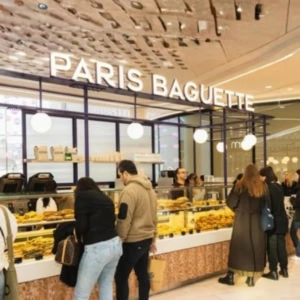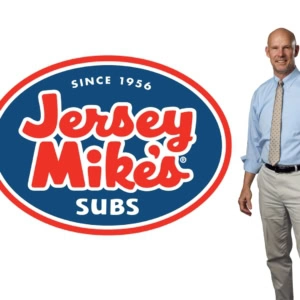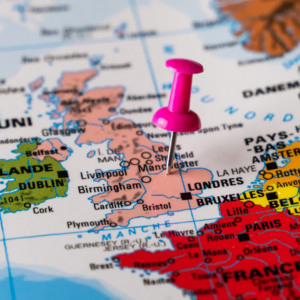In the dynamic landscape of the Italian economy, franchising emerges not only as a successful business model, but as a real engine of economic growth. This article aims to explore the world of franchising in Italy, analyzing how different models of this business strategy have adapted and thrived in the current context.
Economic contribution of franchising in 2023
First, a clarification should be made: As with any industry, it is important to analyze the economic data of the year preceding the current one porprio to objectively understand market trends and not make purely speculative reasoning on approximate and volatile data. Therefore, in 2023, the decision to open franchises in Italy is confirmed as an extremely advantageous strategic choice, evidenced by significant growth and a robust contribution to the national economy. With an added value of 37.122 billion euros, representing 2.2 percent of Italy’s GDP, the franchising sector demonstrated an impressive 7.1 percent increase over the previous year. This reflects a direct and tangible economic impact, highlighting the power of this business model.
The employment sphere has benefited tremendously, with franchise stores contributing to the creation of more than 120,000 new jobs, bringing the total number of people employed in the industry to 252,848, an increase of 6.3 percent over 2022. These data underscore the important role of franchise stores in promoting employment, especially among young people, and stimulating the economy through new job opportunities.
In terms of tax contribution, franchising paid 10.8 billion euros in taxes in 2023, a significant figure that underscores the sector’s vital role not only in the consumer-based economy but also as a pillar of Italy’s public finances.
Investment in the sector has shown continued growth, with 5.2 billion invested in 2023, marking a 5.8 percent increase over the previous year. These investments reflect entrepreneurs’ confidence in the franchise model and its resilience, even in uncertain economic times.
In light of what has just been pointed out, it seems clear that, opening a franchise in Italy is not only an advantageous choice for those seeking to enter the world of entrepreneurship with the support of an established brand, but it is also a powerful engine of economic growth for the country, with extensive benefits that include increased GDP, employment growth and increased tax revenues.
Impact and growth of franchise business in Italy: analysis of the decade 2013-2023
Franchising in Italy showed remarkable growth between 2013 and 2023, consolidating its role as an essential pillar of the country’s economy. During this period, the best franchises have demonstrated extraordinary resilience and remarkable adaptability, integrating advanced technologies to improve their operational efficiency and customer interaction.
Key points from the analysis of the decade:
- Growth in Value Added:
- Value added increased from 27.1 billion euros in 2013 to 37.1 billion euros in 2023.
- This represents a significant increase of 7.1% over the past year.
- Increased Employment:
- Employment in the franchise industry increased from 215,000 in 2013 to 252,848 in 2023.
- The sector has consistently created jobs, supporting the local economy.
- Increased Tax Gains:
- Tax revenues grew from 8.1 billion in 2013 to 10.8 billion in 2023.
- The 8 percent increase over the past year highlights the sector’s important contribution to public finances.
- Investment Expansion:
- Franchise investment increased from 4.2 billion in 2013 to 5.2 billion in 2023.
- This increase reflects entrepreneurs’ continued confidence in the franchise model and its adaptability.
These data not only confirm the strength of the franchise model in Italy, but also its potential for continued growth. Franchising remains a vital component of the Italian economy, able to meet economic challenges and take advantage of innovation opportunities for sustained growth.
High-profitability franchise sectors and employment in Italy
The franchising landscape in Italy is distinguished not only by its strength and growth, but also by the diversity of sectors that make up the economic fabric of franchising. Some of the best franchises operate in industries that demonstrate high profitability and strong employment generation capacity, further underscoring the attractiveness of opening a franchise store in these areas.
In the food sector, which is one of the pillars of Italian franchising, value added in 2023 reached 12.5 billion euros, constituting 33.7 percent of total franchising. This industry not only offers strong resilience to economic downturns due to stable consumer demand, but also employs 78,000 people, accounting for 31 percent of total franchise employment. Investment in this sector amounts to 1.8 billion euros, showing clear confidence in the growth potential.
At the same time, the apparel and accessories sector continues to be influenced by fashions and trends, with an added value of 8.2 billion euros and 52,000 employees. The commitment to innovative marketing and visual communication is evident, with investments reaching 1.2 billion euros in 2023.
The personal services sector, which includes wellness and individual care services, showed remarkable growth, with added value of 7.8 billion euros and 64,000 employees. This segment benefits from a growing demand for personalized services and highlights the importance of customer experience and professionalization of operators, with investments reaching 1.1 billion euros.
In addition to these, online franchising emerges as a fast-growing sector, with an added value of 1.2 billion euros and 15,000 employees, showing considerable untapped potential. The adoption of e-commerce and digital marketing strategies is radically transforming this segment, making it an intriguing option for new entrepreneurs.
These data not only confirm the importance of choosing the right industry to open a franchise store, but also highlight the opportunities for success and growth in the different areas of Italian franchising.
Italy’s leading regions for franchise opening in 2023
Regional analysis provides further insight into where the best franchises are most concentrated, directly influencing the decision on where to open a franchise. Italian regions show significant differences in the distribution and success of franchise businesses, with some areas emerging as central hubs for certain sectors.
- Lombardy, for example, stands out for a high concentration of signs, especially in the food, clothing and personal services sectors. This region, with Milan at its center, offers a dynamic business environment and a wide range of business opportunities, making it ideal for opening a franchise store.
- Latium, and Rome in particular, is known for a strong franchise presence, with a predominant focus in the service sector. This region attracts national and international brands, benefiting from a large tourist flow and a fairly large local market.
- Emilia-Romagna has a well-established tradition in franchising, with an accentuated bias toward agribusiness and business services, reflecting the region’s strong gastronomic and entrepreneurial identity.
- The Veneto region shows a high diffusion of franchising across different areas, characterized by a good balance between the various sectors. This region supports a variety of business ideas, providing fertile ground for the growth of new franchise businesses.
- Finally, Piedmont stands out for the significant presence of franchise signs, especially in retail and personal services, benefiting from a well-developed business infrastructure and a solid consumer base.
Understanding these regional dynamics is critical for entrepreneurs consideringopening a franchise, as choosing the right region can greatly influence the prospects for business success. This information not only guides the choice of the ideal location but also provides strategic insights for adapting business offerings to the specifics of the local market.
Master franchise vs sub-franchise: Which one to choose in Italy?
In the franchise landscape, two expansion models often attract attention: the master franchise and the sub-franchise. Both offer strategies for growing a brand, but they have different characteristics and peculiarities. Let’s look together at the nuances of each model and try to figure out which one might work best in Italy.
- We envision the master franchise as a kind of “franchisor in franchising.” The franchisor grants an entrepreneur, the master franchisee, the right to develop the franchise brand and format in a specific territory, in turn becoming a sub-franchisor for that area.
The master franchisee assumes responsibility for recruiting, selecting and training sub-franchisees, those courageous entrepreneurs who will open brand outlets in the assigned territory. It also provides support in terms of marketing, operations, and business management, becoming a mentor for sub-franchisees. In return for this valuable work, the master franchisee receives a royalty from the franchisor for each sub-franchise granted.
- On the other hand, sub-franchising focuses on the individual business unit. An entrepreneur, the sub-franchisee, acquires the right to use the franchise brand and format to open a store in a specific area within the master territory.
The sub-franchisee operates under the franchisor’s brand and guidelines, paying a royalty for the privilege of being part of the network. Must follow the rules and procedures established by the franchisor and master franchisee, ensuring consistency and uniformity within the brand.
What is the winning model in Italy?
There is no magic recipe that defines one model better than the other. The choice between master franchise and sub-franchise depends on several factors, such as the business sector, market size, franchisor experience, and the business culture of the area.
In some industries, such as apparel or food, master franchising can be more effective in ensuring rapid expansion and brand consistency nationwide. In large or complex markets, sub-franchising may prove better suited to take advantage of the local knowledge and adaptability of sub-franchisees to the specifics of the area.
The experience of the franchisor plays a key role. If the franchisor has limited experience in Italy, the master franchisee can provide valuable support in managing the Italian market. Conversely, if the local entrepreneurial culture is strong and deep-rooted, sub-franchising can foster greater brand diffusion through the input of motivated local entrepreneurs who are already entrenched in the economic fabric.
The choice between master franchise and sub-franchise requires careful evaluation by the franchisor. It is crucial to consider the potential risks associated with each model, such as lack of direct control in the case of master franchising or possible brand dilution in the case of sub-franchising.
A clear and detailed contractual agreement is essential to define the rights and obligations of all parties involved, providing transparency and protection to franchisors, master franchisees and sub-franchisees.










